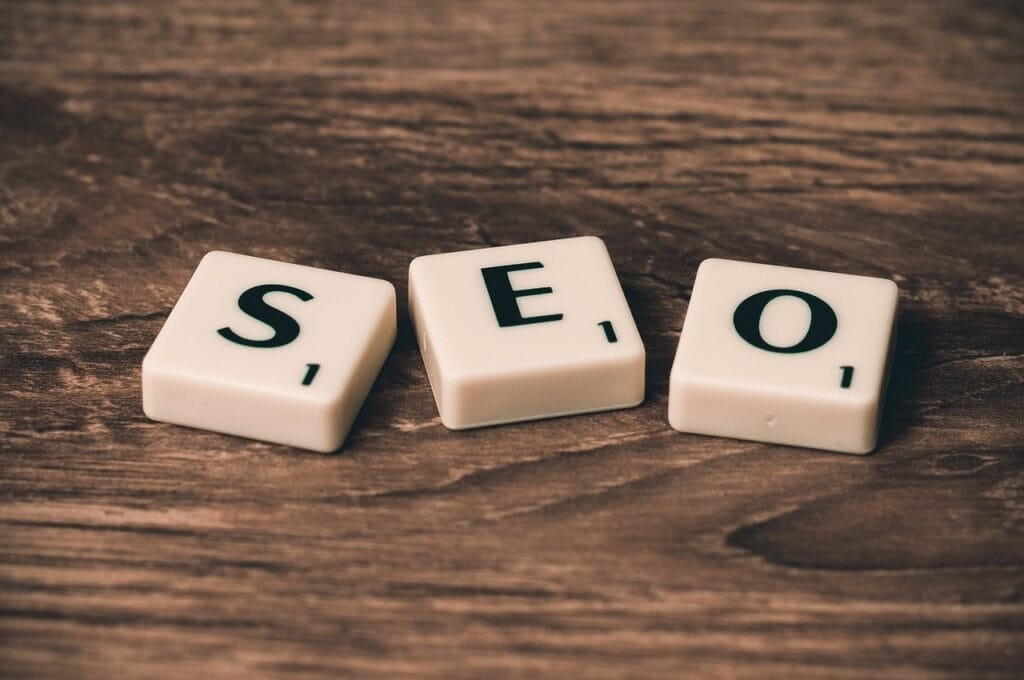This Article has been revised, edited and added to, by Poulomi Chakraborty.
- The Role of Content Marketing in Digital Strategy
- Understanding SEO: The Backbone of Digital Visibility
- Mastering PPC Advertising: Complementing SEO for Comprehensive Digital Reach
- Leveraging Social Media Marketing: Integrating with SEO and PPC for a Unified Digital Strategy
- Harnessing the Power of Email Marketing: A Vital Component of a Holistic Digital Strategy
- Mastering Conversion Rate Optimization: Boosting the Effectiveness of Your Digital Efforts
- Integrating Emerging Technologies in Digital Marketing: Enhancing Strategies for Future Success
- Conclusion
Navigating the vast world of digital marketing can be daunting, especially with its constantly evolving nature and new trends popping up every day. Whether you’re just starting out or looking to sharpen your skills, understanding the fundamental concepts of digital marketing is crucial. This article aims to break down these concepts into easily digestible pieces, ensuring that you grasp not only the ‘what’ but also the ‘how’ and ‘why’ behind each strategy. Let’s dive into the essentials of digital marketing and uncover the tools and tactics that every marketer should have in their arsenal.
The Role of Content Marketing in Digital Strategy

Content marketing stands as a cornerstone in digital marketing strategies, but what makes it so pivotal? Exploring this area reveals why content is not just king but the ace in the deck for marketers aiming to engage and convert their audience.
What is Content Marketing?
At its core, content marketing involves creating and distributing valuable, relevant, and consistent content to attract and retain a clearly defined audience — ultimately, to drive profitable customer action. It’s about telling your brand’s story in a way that resonates with your potential customers, building relationships rather than just pushing advertisements.
Why Content Marketing?
The power of content marketing lies in its ability to establish trust. In a digital world crowded with advertisements, providing users with high-quality content sets your brand apart as a credible and authoritative source. This trust, once established, forms the foundation of a relationship that encourages customer loyalty and advocacy.
Content Marketing vs. Traditional Advertising
While traditional advertising focuses on promoting products or services through direct appeals, content marketing takes a subtler approach. Here’s a deeper look:
Building Relationships vs. Making Sales
Traditional advertising often aims for immediate sales with a clear call to action: Buy now, Get this today, Don’t miss out. In contrast, content marketing plays the long game. It educates, entertains, and informs the audience, creating a connection that may not immediately lead to a sale but fosters brand loyalty that pays off over time.
Value Offering vs. Value Asking
Content marketing offers value upfront, giving potential customers something useful or enjoyable before asking for anything in return. This could be a blog post offering tips, a tutorial video, or an insightful infographic. Traditional advertising, however, typically asks for value in the form of a purchase right from the start.
Engagement vs. Interruption
Traditional ads often interrupt the user experience, popping up in between TV shows, plastering over billboards, or appearing before a YouTube video. Content marketing, by nature, is different. It seeks to be content that the user actively chooses to engage with rather than something that momentarily captures their attention during a break.
Strategic Implementation of Content Marketing
Implementing content marketing effectively requires a strategic approach:
Understand Your Audience
Knowing who you’re talking to is the first step. What are their interests, needs, and pain points? Tailoring content to meet the specific needs of your audience increases the relevance and impact of your communication.
Choose the Right Channels
Not all content fits all channels. A detailed whitepaper might thrive on LinkedIn or your business blog, while a how-to video might see more engagement on YouTube or Instagram. Choosing the right platform is key to ensuring your content reaches your audience in the most effective way.
Consistency is Key
Regularly delivering quality content helps maintain engagement and strengthens your brand’s voice. Consistency in your messaging and publishing schedule makes your brand reliable and trustworthy in the eyes of your audience.
Content marketing is not just a trend but a shift in the way brands communicate. By providing value first, businesses can not only attract but also retain customers in a way that feels genuine and enriching.
Understanding SEO: The Backbone of Digital Visibility

Search Engine Optimization (SEO) is a critical component of digital marketing that focuses on increasing the visibility of your website in search engine results pages (SERPs). This process is essential for driving organic traffic to your site without the direct cost associated with paid advertising.
What is SEO?
SEO involves optimizing your website and its content to rank higher in search results. This is done through a combination of on-page, off-page, and technical strategies aimed at making your site more attractive to search engines like Google and Bing.
Why is SEO Important?
The primary benefit of SEO is visibility. When your site ranks higher for relevant keywords, it gains more exposure, leading to more organic traffic. This traffic is often more sustainable and cost-effective over the long term compared to paid traffic sources.
SEO vs. PPC: Understanding the Differences
While both SEO and Pay-Per-Click (PPC) advertising aim to drive traffic to your website, they do so in fundamentally different ways:
Cost Implication
PPC involves direct payment for traffic through ads, where you pay each time a user clicks on one of your ads. SEO, however, focuses on earning traffic through free, organic search results.
Longevity and Sustainability
Traffic from PPC is instantaneous but stops as soon as you cease funding it. SEO builds over time and can provide a steady flow of traffic even after you scale back active efforts, assuming your site remains relevant and authoritative.
Trust and Credibility
Users tend to trust organic search results more than ads. A high ranking in organic search results signals to users that your site is likely credible and authoritative, enhancing user trust in your brand.
Effective SEO Strategies
To effectively implement SEO, consider these strategic elements:
Keyword Research
Understanding what your potential customers are searching for is crucial. Keyword research helps you discover the phrases and questions that users are entering into search engines, which you can then target with your content.
On-Page Optimization
This involves optimizing individual web pages to rank higher in search engines. It includes strategies like using relevant keywords in your content, optimizing your headlines and HTML tags (title, meta, and header), and using images and videos effectively.
Quality Content Creation
Content is at the heart of SEO. High-quality, engaging content that answers users’ questions and provides value is more likely to rank well. Google’s algorithms particularly favor content that demonstrates expertise, authority, and trustworthiness.
Building Backlinks
Backlinks — links from other websites to yours — are a crucial component of SEO. They act as a vote of confidence from one site to another, signaling to search engines that your content is valuable and trustworthy. Effective link-building strategies can significantly impact your site’s ranking.
SEO is a complex but essential area of digital marketing that requires ongoing attention and refinement as search engine algorithms evolve. Its integration into your digital marketing strategy can fundamentally change the way your business attracts and retains customers.
Mastering PPC Advertising: Complementing SEO for Comprehensive Digital Reach

Pay-Per-Click (PPC) advertising is a powerful digital marketing tool that works in tandem with SEO to enhance your online presence and drive targeted traffic to your website. While SEO focuses on organic search results, PPC allows you to buy your way to the top of search results and other platforms. Understanding how these two strategies can complement each other is crucial for maximizing your digital marketing efforts.
What is PPC Advertising?
PPC is a model of internet marketing in which advertisers pay a fee each time one of their ads is clicked. Essentially, it’s a way of buying visits to your site, rather than attempting to earn those visits organically through SEO. Common platforms for PPC include search engines (like Google Ads) and social media channels (like Facebook Ads).
The Synergy Between SEO and PPC
While SEO and PPC are often viewed as competing strategies, they actually complement each other in several ways, offering a multi-faceted approach to digital marketing:
Visibility
SEO and PPC together cover both organic and paid channels, increasing overall visibility and doubling the likelihood that your target audience will see your brand. For competitive keywords, a high-ranking SEO presence combined with PPC ads can dominate the search engine results pages (SERPs), greatly increasing traffic.
Shared Keyword Data
Running both SEO and PPC campaigns gives you double the data to analyze. You can use PPC campaign data to refine your SEO strategy and vice versa. For example, identifying high-converting keywords from PPC ads can inform your SEO content strategy, helping to focus on what truly works to attract and convert.
High-Value Targeting
PPC allows for laser-targeted audience reach based on specific keywords, demographics, and even user behavior. While SEO works to bring in traffic over time, PPC can be used to target specific segments of your market quickly. This is particularly useful for promotions, special events, or new product launches.
Testing and Optimization
PPC ads are a great tool for testing. Because PPC can be turned on and off easily, it’s a perfect way to test keywords and business propositions for immediate feedback. This data can then be used to optimize your SEO strategy, improving areas like meta descriptions, content quality, and keyword focus.
Best Practices for Integrating PPC with SEO
To effectively integrate PPC with SEO, consider these actionable strategies:
Consistent Messaging and Branding
Ensure that your ads and organic search listings convey a consistent message. This coherence helps in reinforcing your brand message and increases the likelihood that users will engage with your content, whether they come through paid or organic channels.
Strategic Keyword Use
Use PPC to focus on competitive keywords that are hard to rank for organically. Meanwhile, let your SEO strategy cover broader keyword groups that can attract traffic over a longer period. This dual approach covers more ground and builds a stronger online presence.
Optimized Landing Pages
Both SEO and PPC should drive traffic to optimized landing pages that convert. Use the insights from PPC landing page performance to tweak your organic landing pages, ensuring that they are set up to convert as effectively as your PPC-driven pages.
By integrating PPC with your SEO efforts, you can not only maximize your digital presence but also create a more resilient and responsive marketing strategy. Each channel supports the other, providing data and insights that are invaluable for fine-tuning your approach and ultimately, driving more qualified traffic to your site.
Leveraging Social Media Marketing: Integrating with SEO and PPC for a Unified Digital Strategy

Social media marketing has become an indispensable part of the digital marketing ecosystem, offering unique opportunities to engage directly with consumers, build brand awareness, and drive traffic to your website. When integrated with SEO and PPC, social media marketing can amplify your overall digital strategy, creating a cohesive and dynamic online presence.
What is Social Media Marketing?
Social media marketing involves using platforms like Facebook, Twitter, Instagram, and LinkedIn to promote your brand, products, or services. It’s not just about posting content; it’s about fostering engagement, building relationships, and creating community around your brand.
The Complementary Role of Social Media in Digital Marketing
Integrating social media marketing with SEO and PPC provides several strategic advantages, enhancing the reach and effectiveness of each method.
Enhanced Brand Visibility and Reach
Social media platforms offer vast exposure due to their massive user bases. By integrating social media strategies with SEO and PPC, you can extend your reach beyond typical search engine users to include those who spend significant amounts of time on social platforms. This broader visibility helps in reinforcing your brand presence across multiple digital touchpoints.
Traffic Generation and SEO Benefits
While social media’s direct impact on SEO rankings is still a topic of debate among marketers, it’s undeniable that social media significantly contributes to indirect SEO benefits. Social shares, likes, and comments can increase your content’s reach and drive traffic to your website. This increased traffic signals to search engines that your content is valuable, which can positively impact your SEO efforts.
Content Promotion and Engagement
Social media is an excellent platform for promoting content originally created for SEO purposes, such as blog posts, videos, and infographics. By sharing this content on social media, you not only increase its visibility but also boost engagement. Furthermore, engaging with users on social media can help gather insights into their preferences and feedback, which can inform both your SEO content strategy and PPC ad targeting.
Retargeting Opportunities
Combining PPC with social media allows for sophisticated retargeting strategies. For example, you can use PPC data to identify potential customers who visited your site but didn’t convert and then target them with customized social media ads. This integration ensures that your brand stays top of mind for these users, increasing the chances of conversion.
Best Practices for Integrating Social Media with SEO and PPC
To maximize the benefits of integrating social media with SEO and PPC, consider these actionable strategies:
Consistent Content Strategy
Develop a content strategy that aligns your messages across all channels. Your social media posts, SEO articles, and PPC ads should all tell parts of the same story. Consistency in messaging reinforces your brand identity and maximizes the impact of your content.
Utilize Social Insights for Keyword Research
Use the insights gained from social media interactions to inform your SEO and PPC keyword strategies. Social listening can reveal common questions, concerns, and the language your audience uses, which can help refine your keyword targeting and content creation.
Coordinate Campaigns Across Platforms
Plan your marketing campaigns to leverage the strengths of each platform. For instance, you could use SEO to draw in organic traffic with high-intent keywords, use PPC for immediate traffic boosts and testing, and employ social media for engagement and brand loyalty. Coordinating these efforts ensures that each channel supports the others, optimizing your overall marketing strategy.
Social media, when strategically integrated with SEO and PPC, can significantly enhance your digital marketing efforts. It broadens your reach, enriches user engagement, and provides additional channels for content promotion and customer interaction. This holistic approach to digital marketing not only strengthens each individual component but also elevates your overall digital strategy, making it more cohesive and powerful.

Related: Check out our free SEO suite

Harnessing the Power of Email Marketing: A Vital Component of a Holistic Digital Strategy
Email marketing remains one of the most effective digital marketing tactics available. It offers unparalleled direct access to your audience, providing opportunities for personalized engagement and nurturing long-term customer relationships. When integrated with SEO, PPC, and social media, email marketing can enhance the cohesion and reach of your overall digital strategy.
What is Email Marketing?
Email marketing involves sending emails to a list of subscribers to promote products, communicate updates, and engage with potential and current customers. Unlike other digital marketing forms that rely on user discovery, email marketing is proactive and directly reaches the inboxes of individuals who have opted to receive communications from your brand.
The Strategic Role of Email Marketing in Digital Campaigns
Integrating email marketing with other digital marketing tactics can enhance the effectiveness of both channels in several key ways:
Driving Targeted Traffic
Email campaigns can be used to drive traffic directly to specific pages on your website, whether it’s new blog posts, product pages, or special promotional content. This targeted approach helps to increase the effectiveness of your SEO efforts by boosting traffic to newly optimized pages, which can also help in improving search rankings.
Enhancing PPC Campaigns Through Segmentation
By using data from email marketing campaigns, you can improve the targeting and personalization of your PPC campaigns. Email interactions can help segment your audience based on their behavior, interests, and engagement levels, allowing for more tailored PPC advertisements that are likely to convert at a higher rate.
Leveraging Content Across Platforms
The content created for SEO purposes, such as informative articles or videos, can be effectively repurposed in email newsletters. This not only provides value to your subscribers but also reinforces the messages conveyed through other channels, creating a seamless experience across all points of contact with your brand.
Best Practices for Email Marketing Integration
To maximize the impact of email marketing within your broader digital strategy, consider these best practices:
Personalization and Customization
Use the data you have on your subscribers to personalize the emails you send. Addressing subscribers by name, recommending products based on past purchases, or tailoring content to their interests can significantly increase engagement rates and customer satisfaction.
Automated Email Campaigns
Automation can greatly enhance the efficiency and effectiveness of your email marketing. Automated emails, triggered by specific actions like signing up for a newsletter or abandoning a shopping cart, ensure timely and relevant communication that can help drive conversions and strengthen customer relationships.
A/B Testing
Regularly test different aspects of your email campaigns to determine what works best for your audience. Experiment with elements such as subject lines, email layouts, call-to-action placements, and sending times to continuously refine your strategy and improve your results.
Consistent Branding
Ensure that the branding in your emails is consistent with your other marketing channels. This includes the visual design, tone of voice, and messaging. Consistent branding helps reinforce your brand identity across all touchpoints, making your marketing efforts more recognizable and effective.
Email marketing is a powerful tool that can complement and enhance other digital marketing strategies, driving targeted traffic, improving engagement, and increasing conversions. When integrated properly, it provides a direct line to your audience, allowing for personalized communication that builds loyalty and drives sales.
Mastering Conversion Rate Optimization: Boosting the Effectiveness of Your Digital Efforts

Conversion Rate Optimization (CRO) is a critical discipline in digital marketing focused on increasing the percentage of visitors to your website who take a desired action. CRO involves understanding how users move through your site, what actions they take, and what’s stopping them from completing your goals. By optimizing the conversion process, you can significantly enhance the ROI of your entire digital marketing strategy.
What is Conversion Rate Optimization?
CRO is the process of enabling people to take action when they visit your website. Whether it’s purchasing a product, signing up for a newsletter, or filling out a contact form, CRO looks at what drives, stops, and persuades users so you can optimize for better results.
Why is CRO Essential?
CRO is vital because it makes every visitor exponentially more valuable. By improving the conversion rate, you’re effectively increasing your return on investment from every marketing channel and campaign. This is particularly important in digital marketing where attracting traffic can be costly and competitive.
Integrating CRO with SEO, PPC, and Social Media
CRO works hand-in-hand with SEO, PPC, and social media marketing to not only drive traffic but ensure that traffic leads to meaningful action.
Complementing SEO
While SEO is focused on driving traffic, CRO turns that traffic into results. By analyzing the behavior of users coming from organic search and identifying trends and patterns in their interaction with your site, you can make informed decisions to tweak and optimize the user experience to boost conversions.
Enhancing PPC Campaigns
For PPC campaigns, CRO is particularly important because you are paying for each click. By optimizing the landing pages that your PPC ads direct traffic to, you can improve the conversion rate, making each click more valuable. This directly affects the overall effectiveness and cost-efficiency of your PPC efforts.
Leveraging Social Media Insights
Social media platforms provide a wealth of data about consumer behavior and preferences. Insights gained from social media can inform CRO efforts by highlighting the types of content and offers that resonate most with your audience. Additionally, the interactive nature of social media allows for rapid testing of elements like call-to-action phrases or content styles before they are implemented on a larger scale on your website.
Best Practices for Effective CRO
Implementing successful CRO involves a systematic approach to understanding user behavior and making data-driven decisions.
Use of Analytics
Utilize web analytics tools to gather data on how users interact with your website. Track metrics such as bounce rates, page views per visit, and time on site to understand where you may be losing potential conversions.
A/B Testing
Regularly conduct A/B testing to experiment with different versions of your web pages. Test elements like headlines, button colors, images, layout designs, and content length to determine which variations perform the best at converting visitors.
User Feedback
Incorporate user feedback to optimize the conversion process. Tools like surveys, user testing, and usability studies can provide direct insights into what users like and dislike, helping you make more informed optimizations.
Continuous Optimization
CRO is not a one-time task but an ongoing process of improvement. Regularly revisit your strategies, test new ideas, and refine your website based on the latest data and trends.
Conversion Rate Optimization is a powerful tool in the digital marketer’s toolkit, essential for turning traffic into valuable actions. By integrating CRO with other marketing strategies like SEO, PPC, and social media, you can ensure that your digital marketing efforts are not just driving traffic, but are also delivering tangible results.
Integrating Emerging Technologies in Digital Marketing: Enhancing Strategies for Future Success
As digital marketing evolves, the integration of emerging technologies has become crucial for businesses seeking to stay ahead of the curve. These technologies not only offer new ways to engage with customers but also improve the efficiency and effectiveness of marketing campaigns. Let’s explore how innovations like artificial intelligence (AI), augmented reality (AR), and big data are transforming the landscape of digital marketing.
The Role of Artificial Intelligence
AI is reshaping digital marketing through automation and personalization, making interactions more tailored and responsive to individual customer needs.
Personalized Customer Experiences
AI enables the personalization of marketing messages based on user behavior, preferences, and data. By analyzing vast amounts of data, AI can identify patterns and predict customer behavior, allowing marketers to deliver content and offers that are more likely to resonate with individual users.
Chatbots and Customer Service
AI-driven chatbots provide instant customer service and support, handling inquiries and issues around the clock. These bots can manage multiple interactions simultaneously, ensuring that customer needs are met promptly and efficiently, which can significantly enhance the user experience and improve conversion rates.
Enhanced Ad Targeting
AI algorithms improve the targeting capabilities of digital advertising campaigns, optimizing ad spend by ensuring that ads are shown to the most relevant audience based on their likelihood to convert. This not only increases the effectiveness of campaigns but also reduces wasted expenditure on poorly targeted advertising.
Augmented Reality: Creating Immersive Experiences
AR adds a layer of digital information to the physical world, offering innovative ways for brands to engage with consumers.
Virtual Try-Ons
In industries like fashion and beauty, AR enables consumers to try products virtually before making a purchase decision. This can significantly enhance the shopping experience, reduce the uncertainty associated with online shopping, and increase customer satisfaction and loyalty.
Interactive Ads
AR can transform traditional ads into interactive experiences that allow consumers to engage with products in a more meaningful way. For example, a furniture brand could use AR to let customers see how a piece of furniture would look in their own home before buying, providing a practical and engaging way to shop.
Leveraging Big Data for Strategic Insights
The vast amounts of data generated by digital interactions provide a goldmine of insights that can drive more informed marketing decisions.
Predictive Analytics
Big data can be analyzed to predict trends and customer behaviors, allowing marketers to anticipate market movements and consumer needs. This foresight can lead to more proactive and strategic marketing efforts, positioning companies as leaders rather than followers in their industries.
Customer Segmentation
Detailed data analysis allows for more precise segmentation of customer bases, enabling the delivery of highly targeted and relevant marketing messages. This segmentation can lead to more effective and efficient marketing strategies, as messages can be tailored to the specific needs and preferences of different groups.
The integration of emerging technologies such as AI, AR, and big data into digital marketing strategies offers exciting opportunities for businesses to innovate and improve their customer interactions. These technologies not only enhance the customer experience but also provide marketers with powerful tools to increase efficiency, personalize experiences, and gain insights that can drive future success.
Conclusion
In today’s digital landscape, understanding and integrating key digital marketing concepts is essential for any marketer looking to thrive. From the foundational impact of SEO and the immediate advantages of PPC, to the engaging dynamics of social media marketing and the precision of email campaigns, each strategy offers unique benefits. Moreover, conversion rate optimization ensures that traffic translates into tangible results, enhancing the overall ROI of digital efforts.
The incorporation of emerging technologies like AI, AR, and big data further revolutionizes these strategies, providing deeper insights, personalized experiences, and more efficient customer interactions. Together, these elements form a comprehensive digital marketing approach that can adapt to evolving consumer behaviors and technological advancements, setting the stage for sustained business growth and success in an increasingly competitive market. As the digital realm continues to expand, staying informed and agile will be key to leveraging these tools effectively, ensuring that your marketing not only reaches but resonates with your intended audience.
Read Next
- How AI is Revolutionizing Biotech SEO
- Chatbots and SEO in the Biotech Industry
- The Future of Voice Search for Biotech Startups’ SEO Campaigns
- Using Social Platforms to Amplify Biotech Research
- Pinterest and Instagram: A Visual SEO Strategy for Biotech Startups






















Comments are closed.